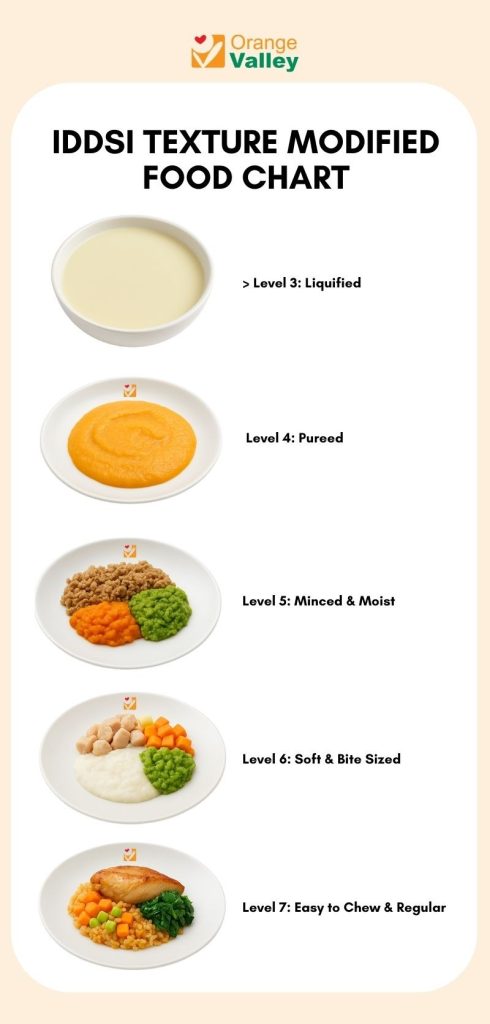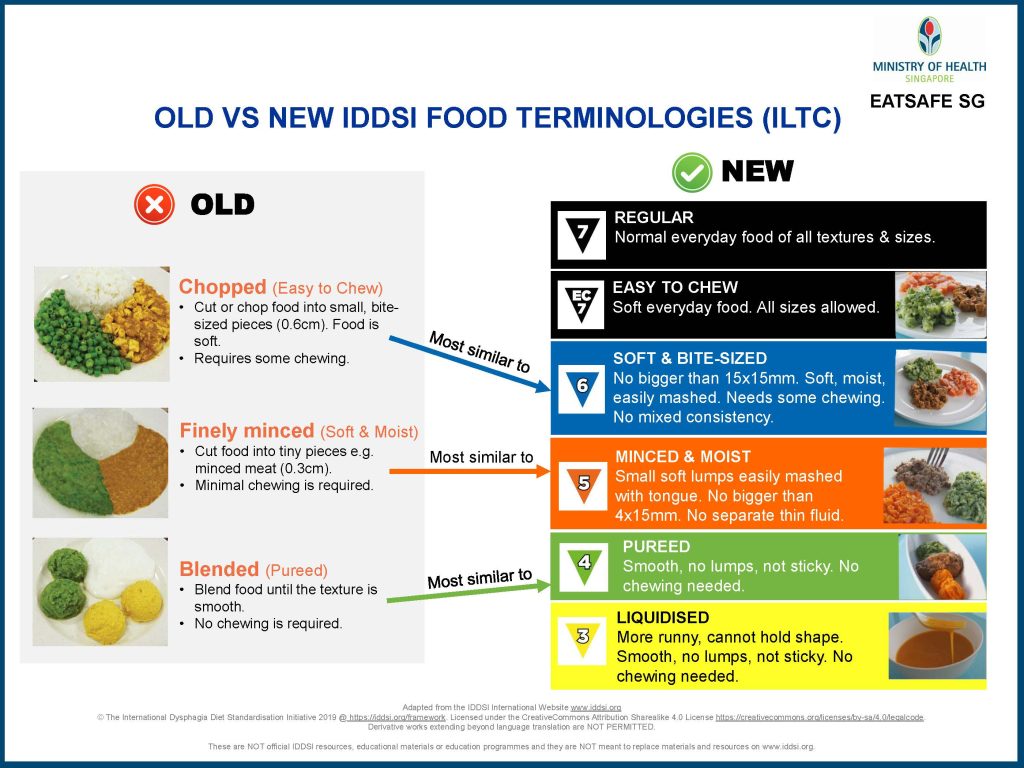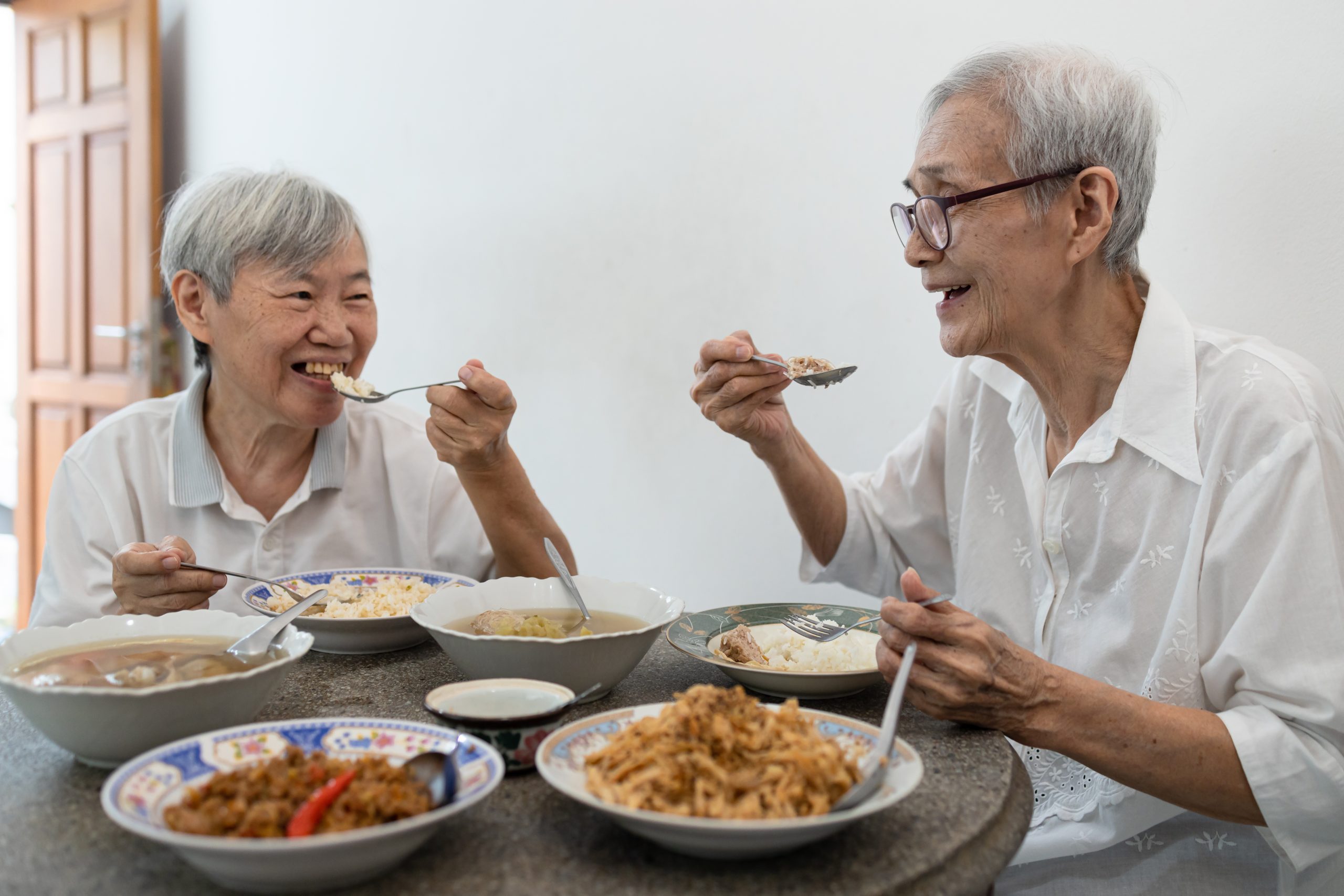Safer Meals for Seniors
Singapore’s ageing population means more residents in nursing homes who may have difficulty swallowing, a condition known as dysphagia. Ensuring that these residents receive meals that are both safe and nutritious is essential. The International Dysphagia Diet Standardisation Initiative (IDDSI) framework gives nursing homes a clear, evidence-based way to classify food textures and liquid thickness so that staff can serve meals suited to each resident’s needs.
Local initiatives such as EatSafe SG complement this by providing training and resources to help facilities in Singapore implement IDDSI standards consistently (EatSafe SG Guide).
What Is the IDDSI Framework
IDDSI is a globally recognised system that standardises terminology for texture-modified foods and thickened liquids used in dysphagia care. It has eight levels (0 to 7) covering everything from thin liquids to regular foods.
- Levels 0 to 3 Liquified foods from thin to extremely thick
- Levels 4 to 7 classify foods from pureed to regular texture
Simple tests such as the IDDSI Flow Test for liquids and the Fork Drip or Spoon Tilt Test for solids help staff verify consistency before serving. This common language improves communication between nurses, dietitians, speech therapists, kitchen staff and families.

Why IDDSI Matters in Nursing Homes

In a nursing home setting, residents often have multiple health conditions and their swallowing abilities can change over time. Adopting IDDSI brings several benefits:
Safety: Reduces the risk of choking and aspiration pneumonia
Consistency: All staff understand what each level means, which prevents miscommunication
Quality of life: Residents enjoy meals appropriate for their abilities while still tasting familiar and culturally relevant
Smooth transitions: When residents move between hospitals, rehabilitation centres and nursing homes, standardised terminology makes diet continuity easier
Implementation in Singapore

Under Singapore’s national standards for dysphagia management, the Ministry of Health (MOH) and the Agency for Integrated Care (AIC) now require all nursing homes to implement the IDDSI framework. To support this rollout, EatSafe SG offers localised training, recipes and visual aids that help institutions standardise their menus and testing procedures in compliance with these requirements.
Many nursing homes are already using IDDSI descriptors on their menus, training kitchen and care staff in the required tests and documenting residents’ prescribed diet levels for safe service.
IDDSI in Practice at Orange Valley

At Orange Valley Nursing Home, the IDDSI framework underpins how meals are planned and served to residents with swallowing difficulties. All meals are prepared in our central kitchen, which supplies our network of nursing homes to ensure consistent quality, safety and nutrition. Our in-house Nutritionist works closely with each resident’s doctors and dietitians, alongside our Head Chef, to ensure every dish meets individual medical and nutritional requirements while remaining safe, nutritious and enjoyable. By combining clinical guidance with culinary expertise and centralised production, Orange Valley reflects the best practices encouraged nationally.
Have Questions?
If you would like to learn more about how we prepare meals safely and nutritiously for residents with dysphagia, or if you’re considering care for a loved one, contact Orange Valley Nursing Home to speak with our care team about our approach to nutrition and safety.
